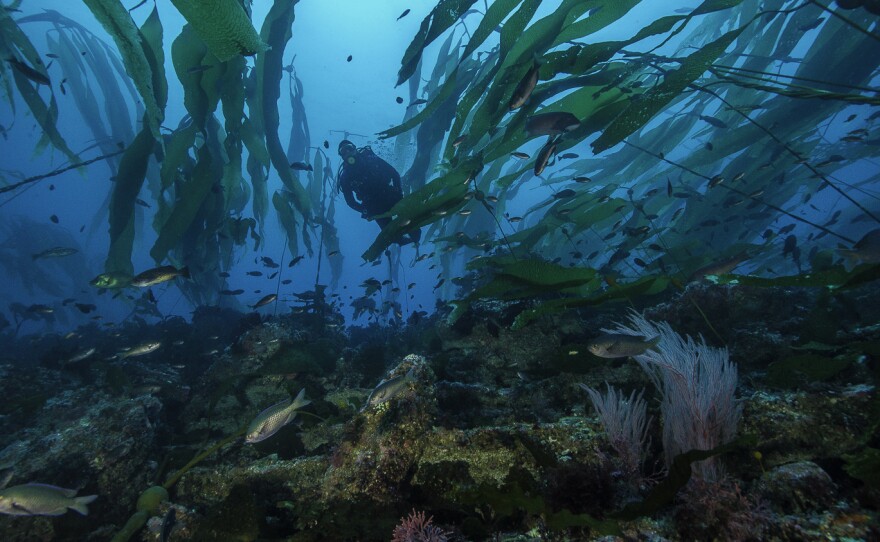The warming climate is putting environmental pressure on California forests that have towered over the Golden State for thousands of years.
They are not the only forests being stressed by climate change, the region’s iconic underwater forests are also facing challenges. Those forests are populated by giant kelp, and there is one located just off the La Jolla shore.
Scripps Institution of Oceanography researcher Ed Parnell didn’t have to walk far from Scripps Pier to find strands of giant kelp washed up on the beach.
“The root system is called the holdfast, it holds the kelp plant to the bottom, right there you can see that,” Parnell said.
They aren’t really roots that grow into the ocean floor and draw up nourishment.
It is how the algae stay anchored to the ocean floor while the rest of the kelp pushes to the surface.
“Basically they put out these stipes,” Parnell said. “And each individual stipe puts out these blades that then make it up to the surface for it to photosynthesize.”
Small gas-filled bulbs carry the long stems to the surface where the blades can soak up the sunshine.
RELATED: Border Sewage Projects Secure Funding, But Progress Will Be Slow
Giant kelp can grow up to 2 feet a day, making it one of the fasting growing living things on the planet.
“The canopy depends on how much bottom, hard bottom, is located at depth,” Parnell said. “Here in San Diego, we have the two largest kelp forests on the West Coast because we have a hard bottom that the kelp can attach to over large areas.”
The giant kelp forests off the coast of La Jolla and Point Loma can be spectacular.
Biologists have compared them to an underwater forest of sequoias, but unlike the giant trees which can live for hundreds and even thousands of years, kelp grows fast and dies fast.
The quick rate of growth makes them a vital part of a vital but delicate ecosystem. The kelp provides both food and habitat.
“The bottom hosts a lot of habitat for species that live in the Kelp forest over their entire lifetime,” Parnell said.
But the giant kelp off San Diego is under siege. Storms and sea urchins have taken a toll, but the potentially more devastating issue is heat.
That’s on full display at the end of Scripps Pier, has joined many people who have helped take the daily temperature there for more than 100 years.
“So this is one of the longest, ongoing data sets in history,” Bruce said.
Those daily temperature readings show the ocean has been warming here since the mid-1970s. Temperatures hit a sustained peak in 2015 and 2016, researchers referred to the huge pool of warm water along the coast as the blob. Just two years later, the ocean temperature here set records again. Heat is devastating the fast-growing kelp and the problem is not limited to Southern California.
“Australia, Tazmania, especially up in New England, also in Europe. And so it’s a phenomenon that is affecting these ecosystems in northern and southern hemispheres,” said Mark Carr, who studies evolutionary biology at UC Santa Cruz.
RELATED: Plastic Bags Are Banned Again In California, But They’re Still Here
The warmer water essentially starves the kelp.
“It reduces the nutrient availability to the algae in shallower waters. And you see this for example down in Southern California when we have these El Nino events and the surface waters warm-up you’ll notice how the kelp forests tend to die back,” Carr said.
Southern California kelp is on the edge of the line between water that’s cold enough and water that’s too warm. Climate science predicts oceans will continue to warm and data confirms that trend has been underway for some time.
“The concern now is whether we are now starting to experience more and more of these heatwaves over time and whether they become more intense,” Carr said.
The iconic kelp may be close to being in trouble and that could have a dramatic impact on the region’s nearshore habitat.
“They host hundreds of species themselves and they provide shelter, habitat and food for many, many species,” Parnell said. “So if the kelp forest itself goes away ... then a lot of those species are going to be less abundant of the food structure of that whole community’s going to change.”







